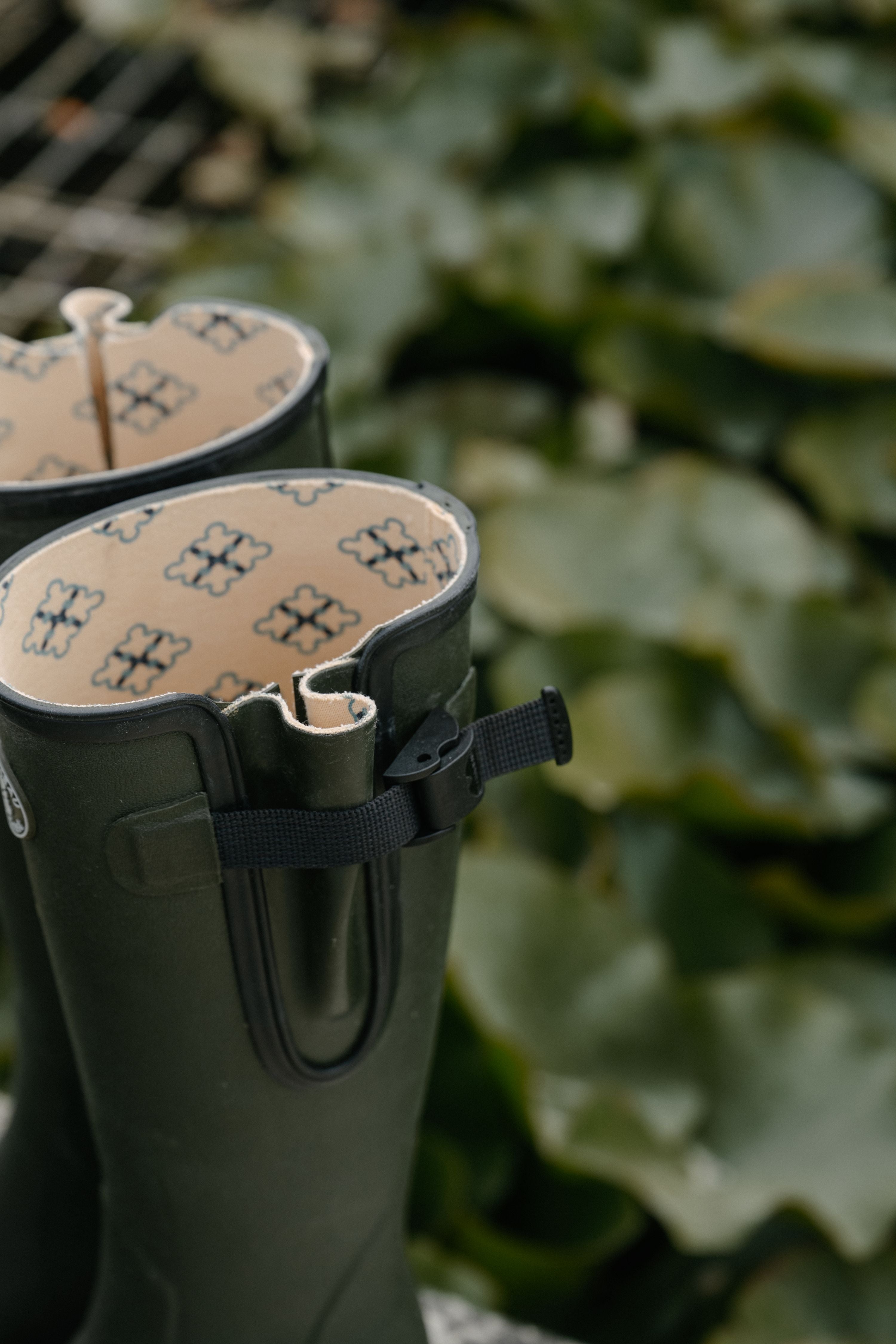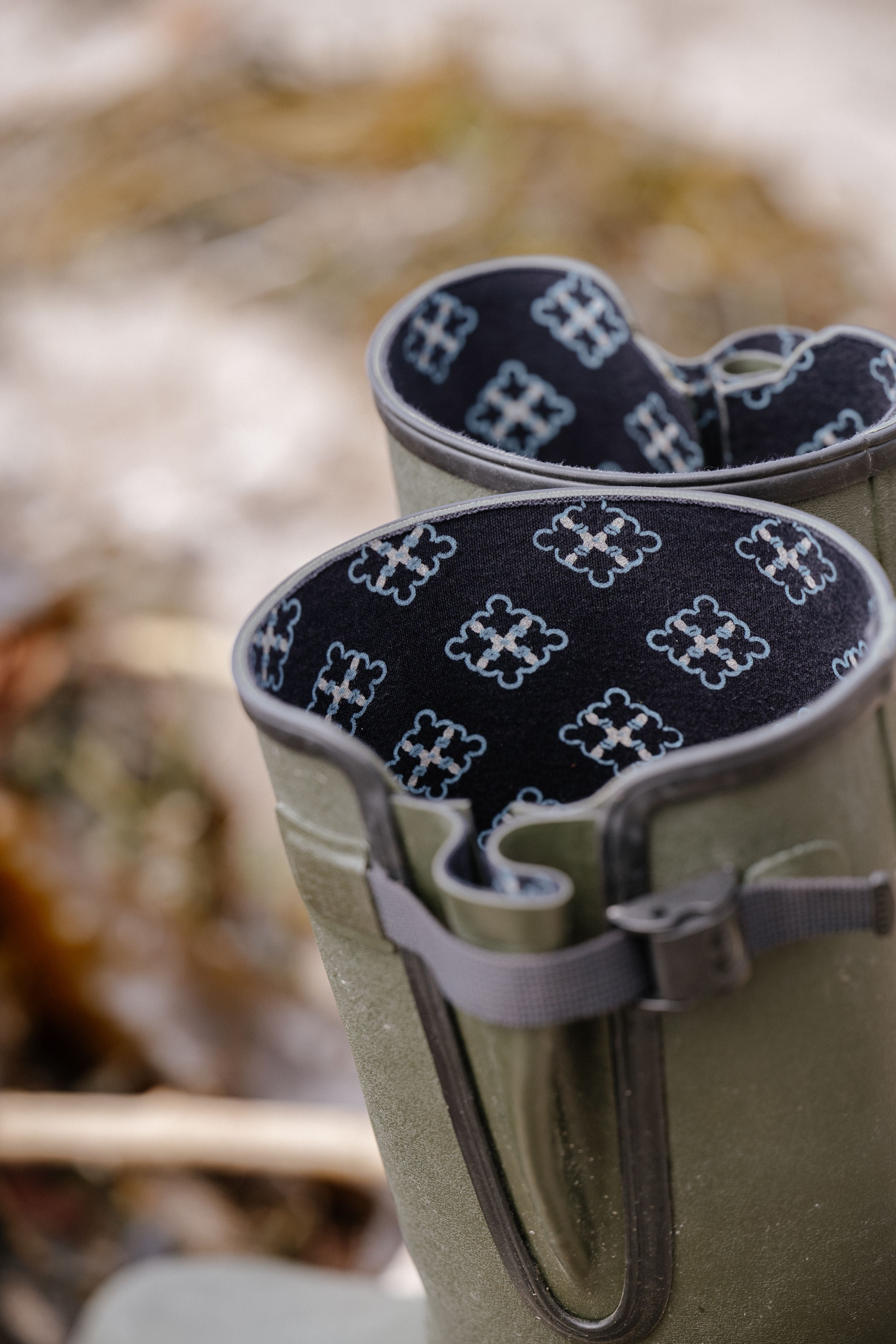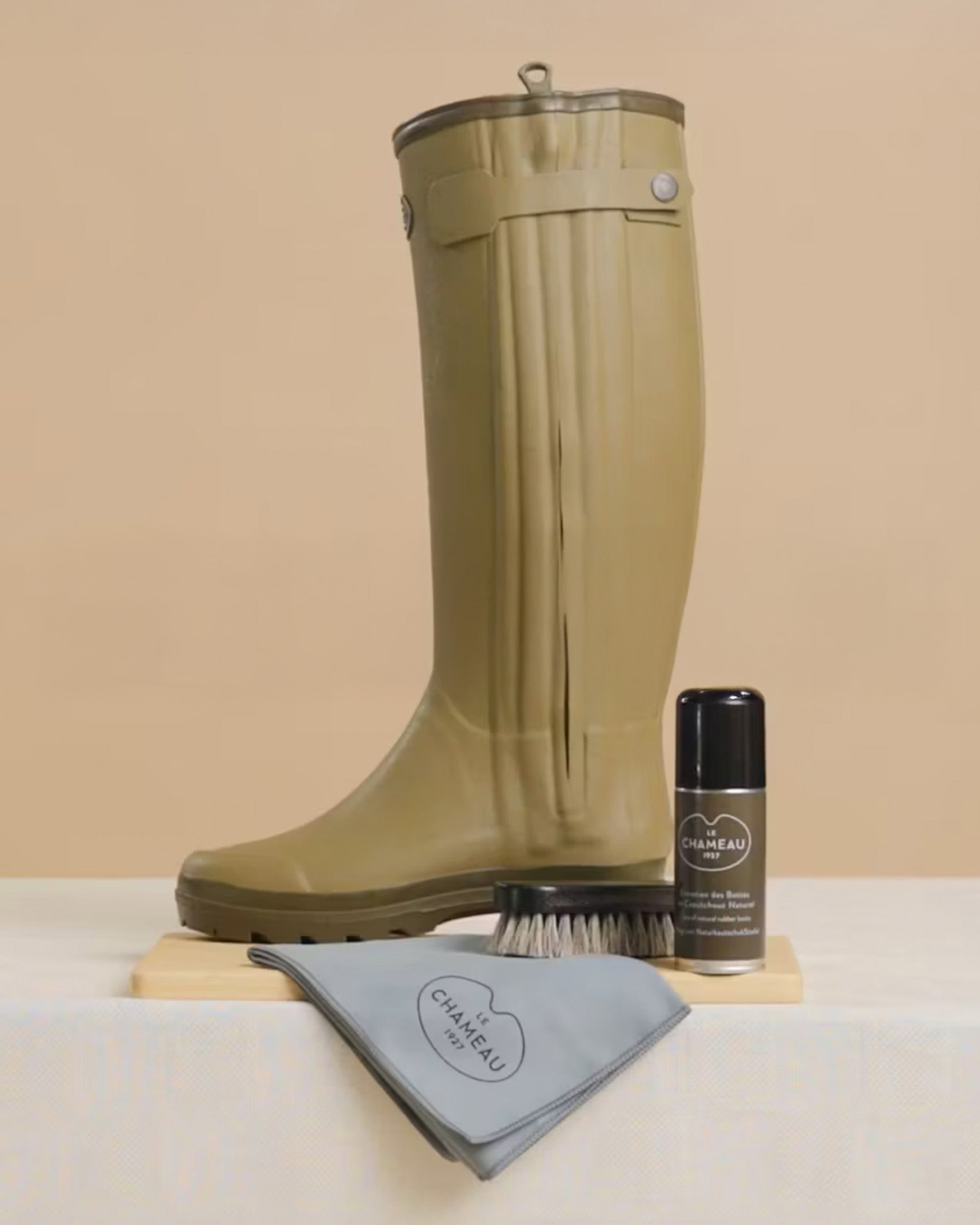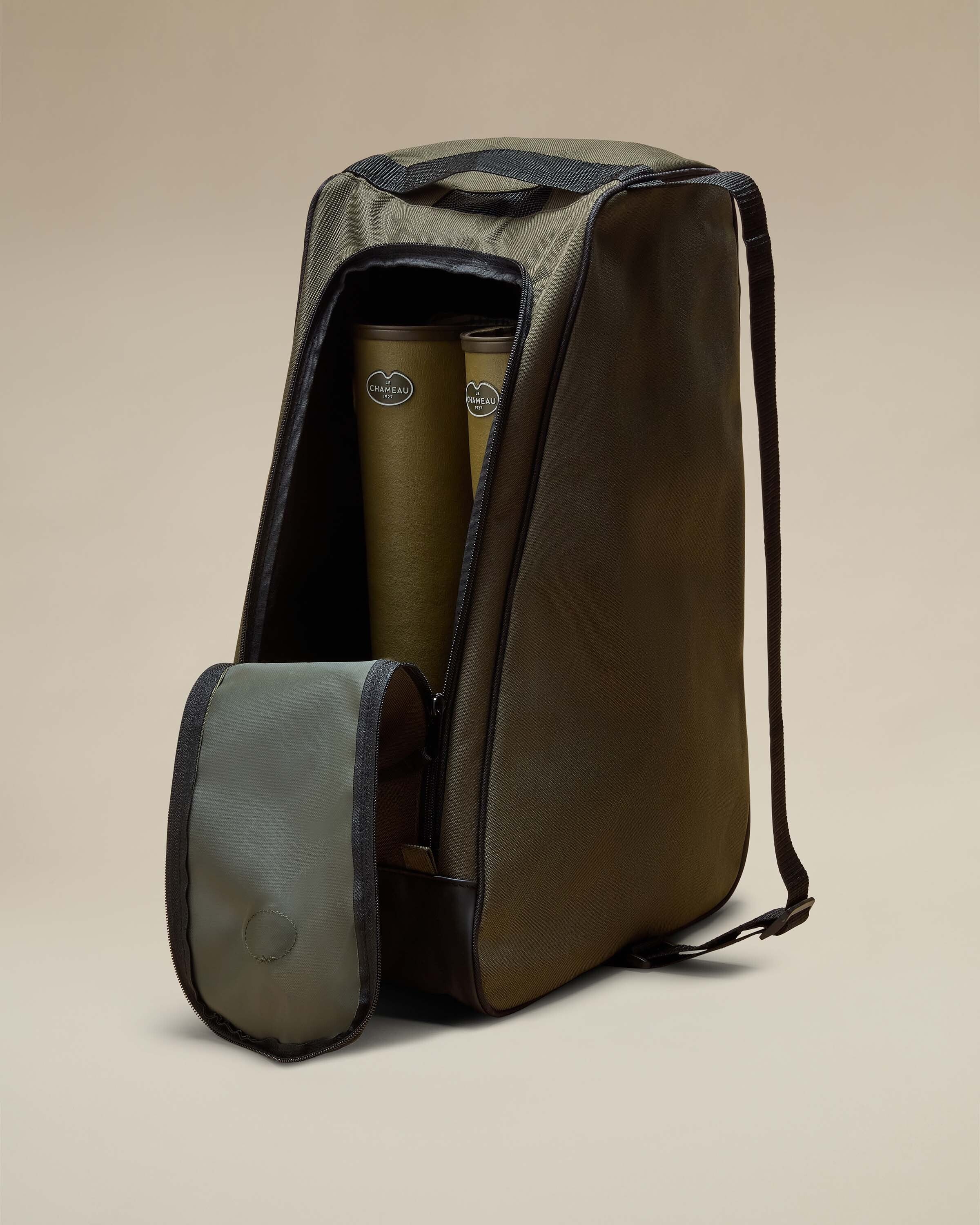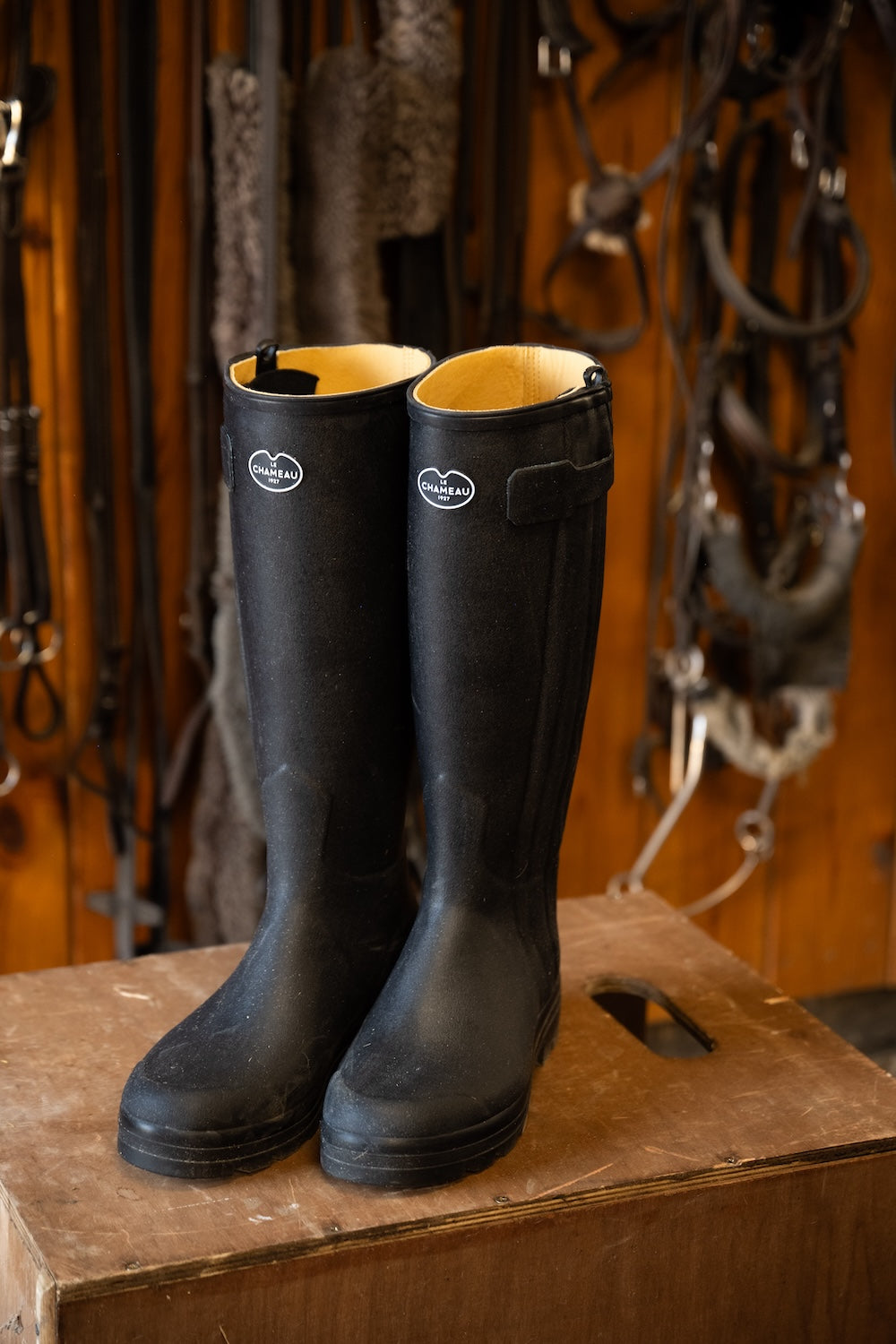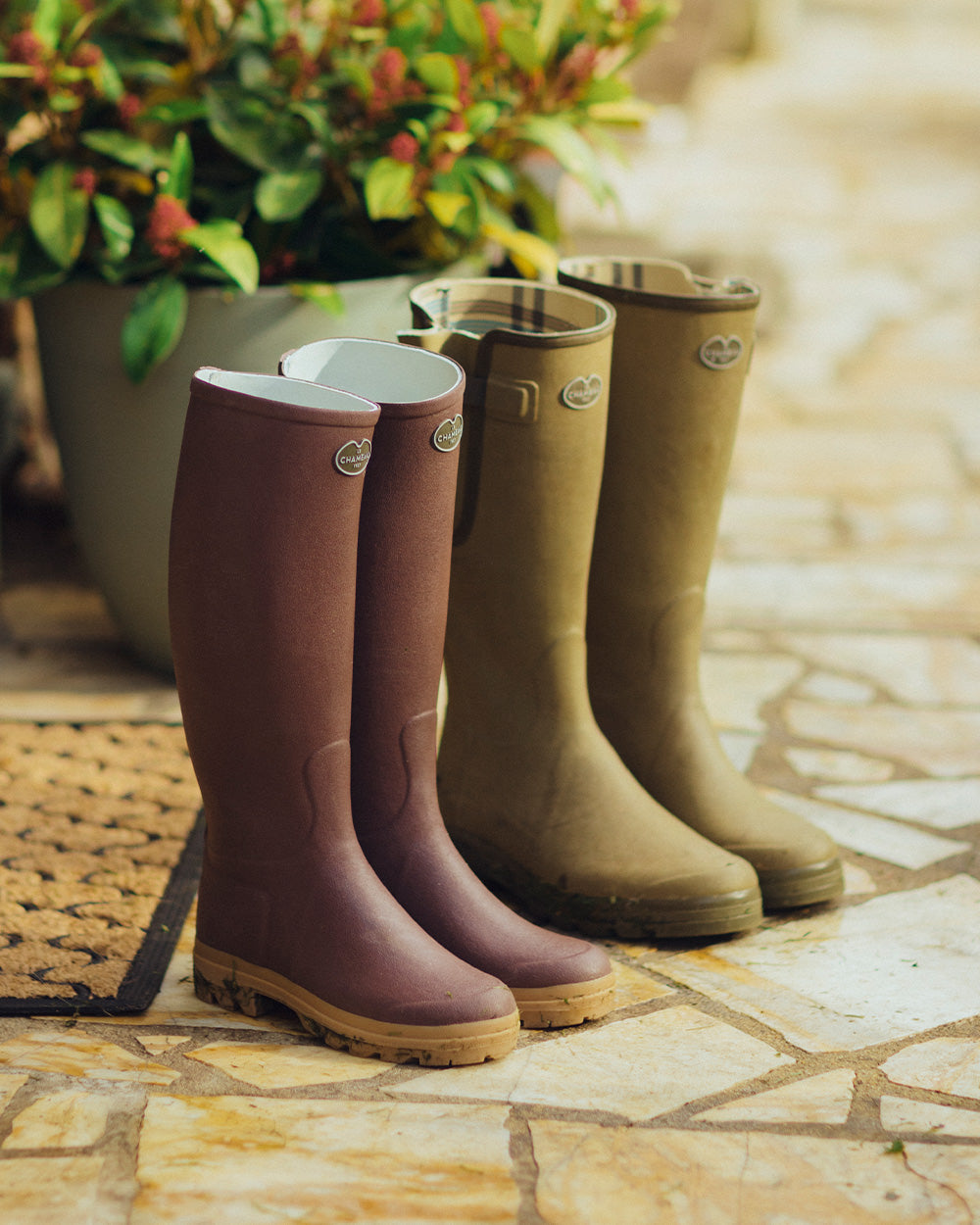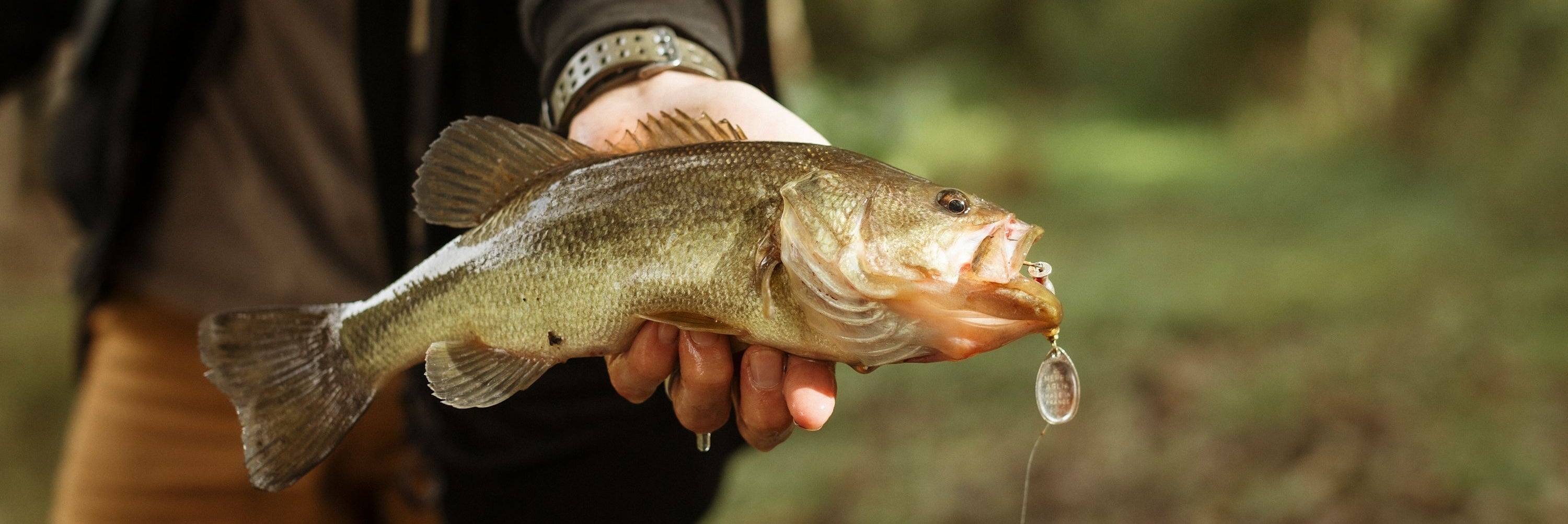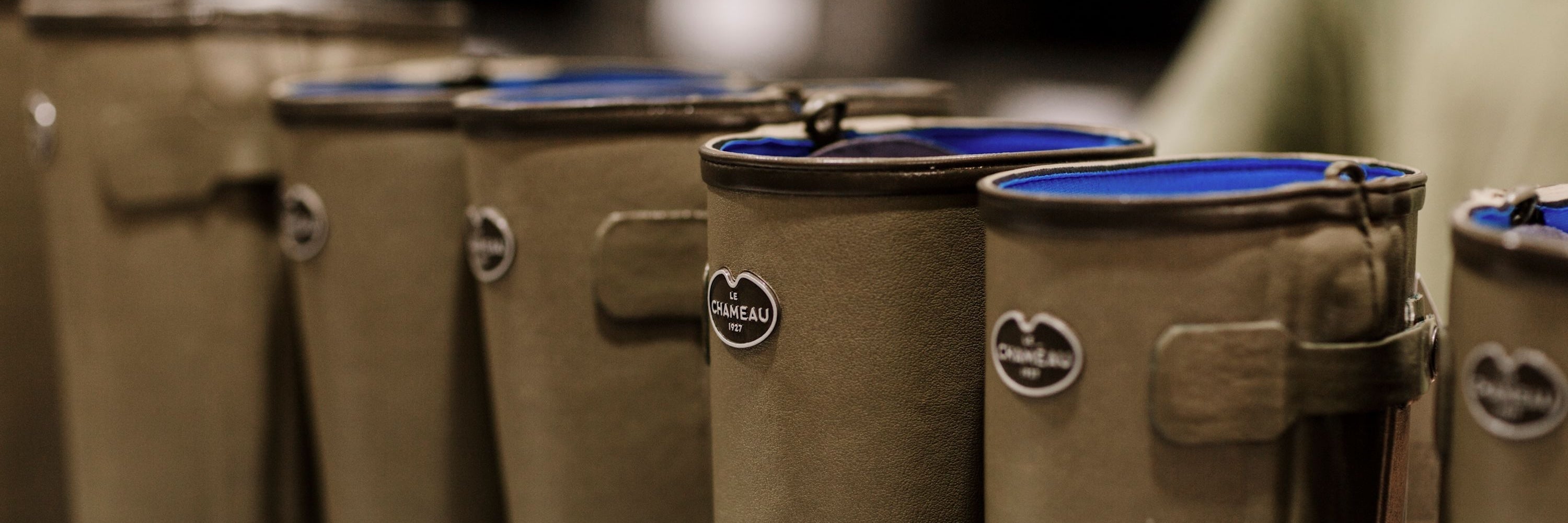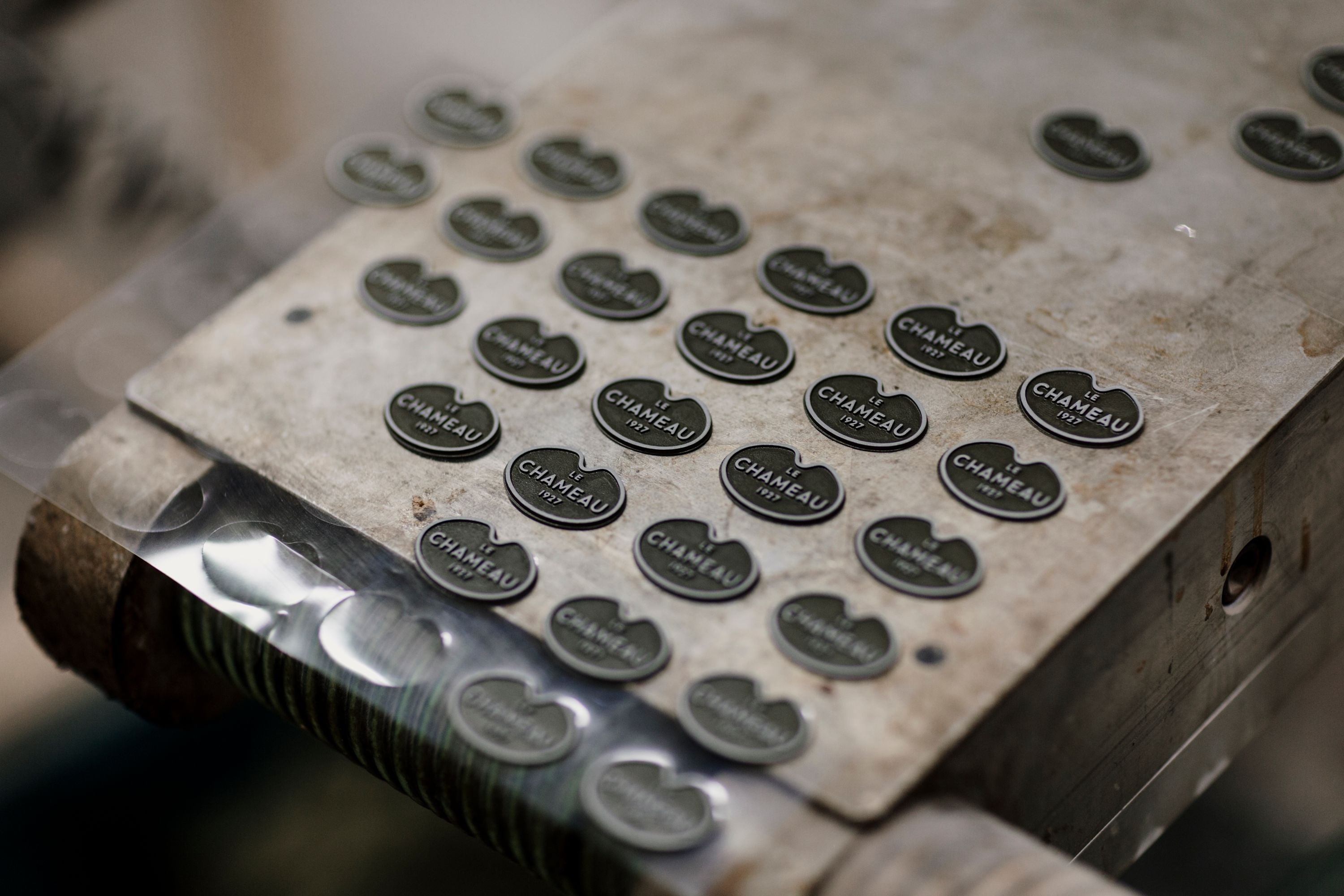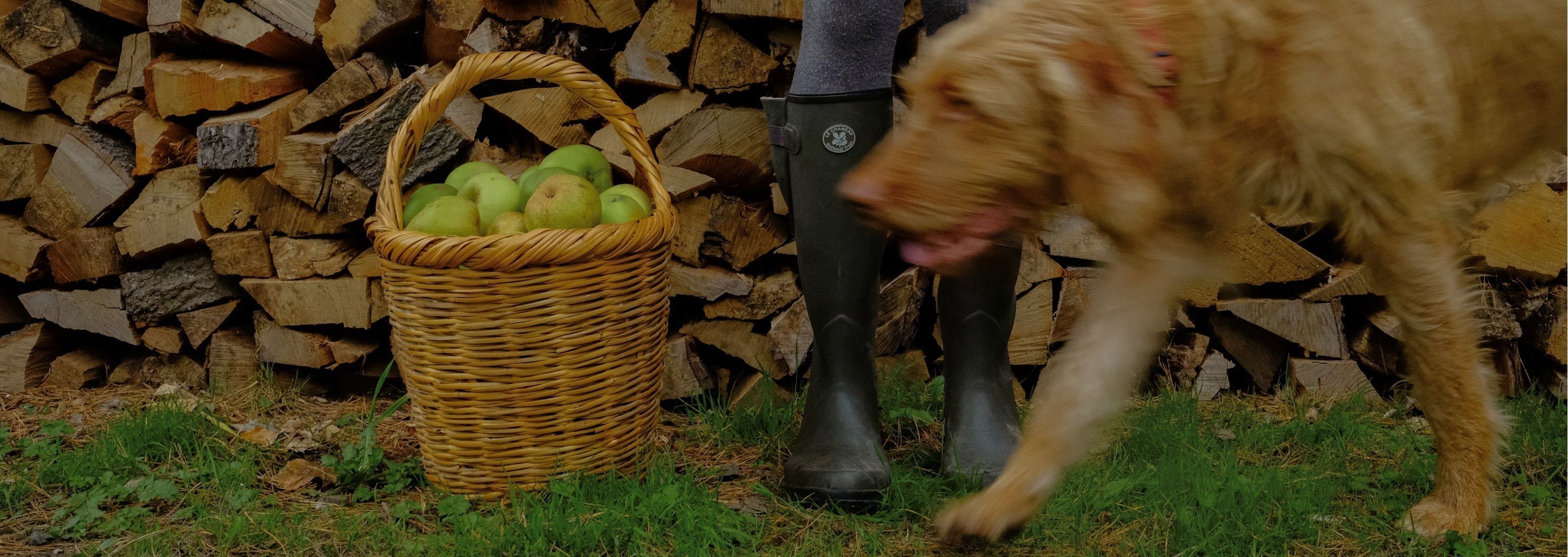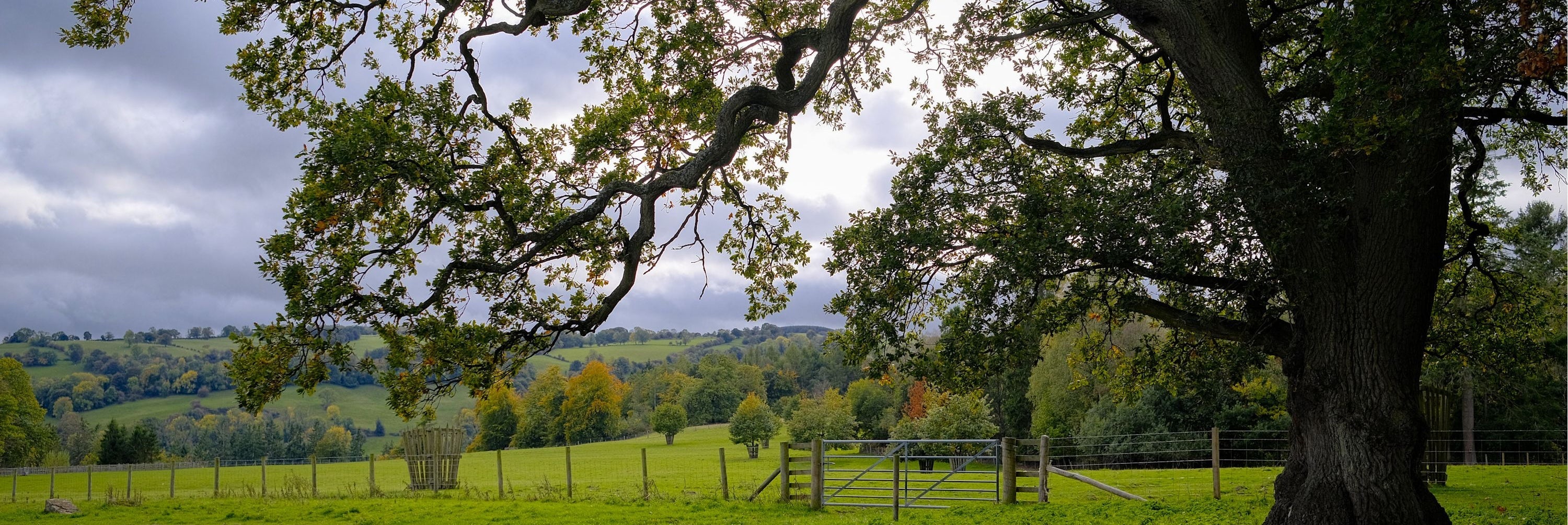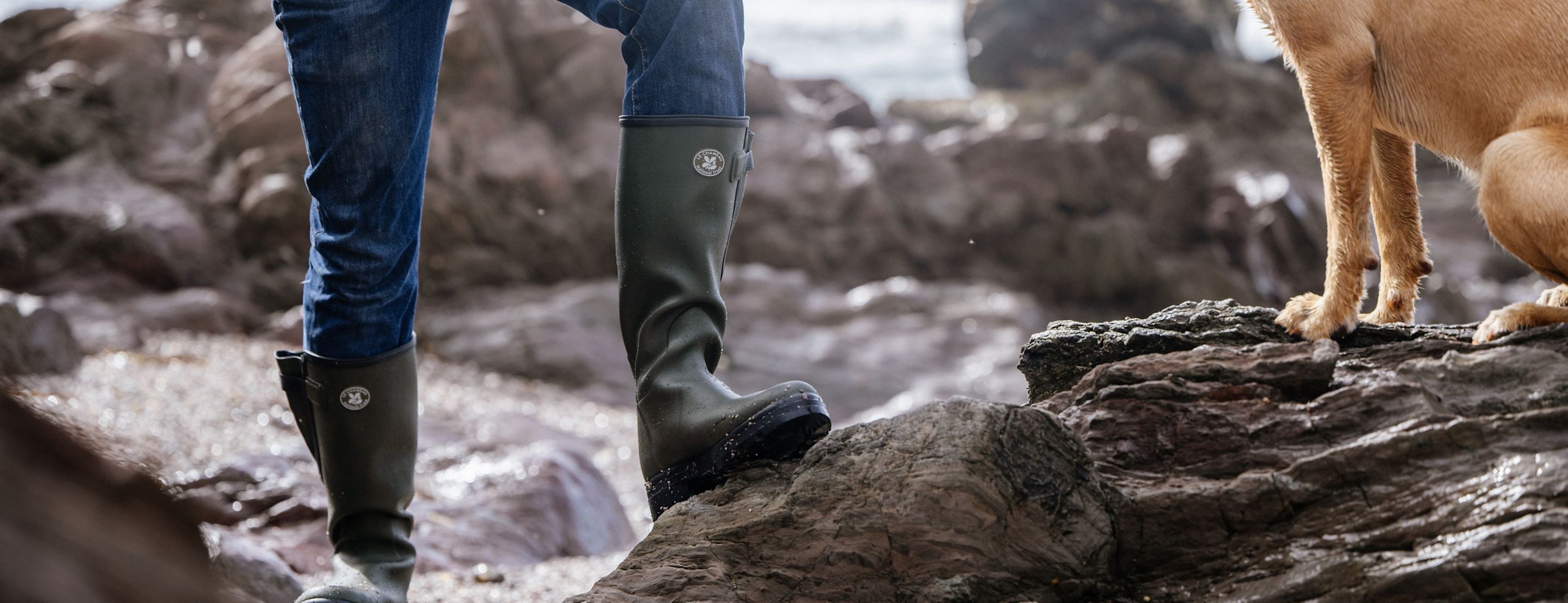The United Kingdom endures 33.7 inches of rainfall each year, with an average of 133 days experiencing rain and snow. Therefore, it is no surprise that wellington boots also known as ‘wellies’ have become a staple piece of every Brit’s wardrobe.
This article will explore the history of the Wellington boot. Where did the Wellington boot originate from? And how did it develop into the modern-day wellington boot?

When Was The Wellington Boot Invented?
Originally worn by officers in the British Army, wellington boots have been around since the 1790s. However, it was Arthur Wellesley, more commonly known as the Duke of Wellington, who popularised the shoe in 1817. This transformed the wellington boot from military uniform to aristocrat fashion.
The Original Wellington Boot
In the late 18th century, British Army officers wore boots called ‘Hessians’ which were tall, soft boots made from calfskin that had tassels and a small heel. These were named after German mercenaries who fought alongside the British in the American War of Independence.
The Hessian boots proved popular with the troops as they were hard-wearing and durable for battle, but also comfortable enough for evening wear. Made suitable for difficult terrains and harsh weather, the boot’s leather was treated with wax to make them softer and more waterproof.
This new design of Wellington boot became a very popular fashion accessory for gentlemen, especially those that were fashionable and concerned with their appearance. The Hessian remained the main fashion for men throughout the 1840's, however, in the 50's they were created as a short wellington boot which was eventually superseded by the ankle boot in the 60’s.

The Duke of Wellington
Born in 1769, Arthur Wellesley (The Duke of Wellington) was a British soldier and a leading political figure in the 19th century. He won victory against Napoleon at the Battle of Waterloo in 1815, became a military hero and later served twice as Prime Minister, first from 1828 to 1830 and again in 1834.
As the former British ambassador to France and the governor of Mysore and Seringapatam in India, Wellesley was a wealthy man, who was appointed Duke of Wellington in 1814. He had his own shoemaker, Mr George Hoby of St James's Street, London.
In the early 1800’s the Duke asked his shoemaker in London to modify the Hessian boot by removing the tassel and using soft calfskin leather to the knee.
The new Wellington boot, named after the Duke of Wellington, himself, was an instant hit among British gentlemen, partly because of its practical and aesthetically pleasing design, but also because Wellesley was a war hero and other men were keen to emulate his style. Wellesley was most often portrayed in paintings wearing these boots that are now commonly known as “wellies”.
The Duke of Wellington Boot Developments
Post World War II the rubber wellies were still a very popular choice of boot after gaining a reputation for being extremely waterproof and agile in the war. The Wellington boot started to become popular among working industries because of the health and safety benefits of the boot. This developed wellies into steel toe-capped Wellington boots as individuals needed strong toe protecting footwear in professions whereby, they had to work with heavy machinery and materials.
As the Wellington boot become more commonly known and worn, the boot started to attract more media attention. Due to the strong demand of rubber Wellington boots, more businesses and brands started to manufacture and develop the rubber boot. Soon Wellington boots become what we know them as today, a pair of wellies.

The Modern-Day Wellington Boot
Today, wellington boots are worn by agricultural professionals, countrymen, dog walkers, gardeners, those with a keen eye for fashion and everyone in between.
Le Chameau understands exactly how widespread the purpose of a wellington boot is, which is why our shoes have been specifically designed to cater to very different activities that require their own unique elements and styles.
To cater to your activities, our Wellington boots are manufactured in a wide range of high-quality materials such as leather, rubber, Jersey, wool, and Neoprene. The learn more about Neoprene technology, read our guide here.
Since 1927, we have prided ourselves on being innovators. From being the first master bootmakers to use a zipper on a rubber boot, to developing our own LCX technologies, we have not stopped developing methods, processes and technology that sets us apart from others. Our heritage is steeped in innovation and technology and so is our future.
Every Le Chameau boot is constructed by one Mastre Bottier. In order to become a Mastre Bottier it takes 9 months of training before they are ready to construct their first Le Chameau boot.
The Mastre Bottier carefully stretches the rubber pieces over the aluminium boot last, gradually forming the famous Le Chameau shape. Once the shape has been created, it’s time to add the trims and small details that give the Le Chameau boot its premium quality.

Le Chameau Wellington Boots
For those that spend time in the field, our Chasseur and Vierzonord boots are unparalleled. With 8 different calf fittings, reinforcement and a waterproof Riri Aquazip, the Chasseur has become the flagship of our range. As comfortable in all weathers as they are on your feet, the Vierzonord is an iconic member of the Le Chameau family due to its adjustable waterproof gusset, dual-density grip sole and an XL option. Both of these come in our highly sought-after neoprene lining.
Our fashionable women’s Wellington boots, such as the Giverny, feature the most breathable and lightweight materials so you don’t have to sacrifice comfort for expertise during warmer weather.
Cut specifically for women and made for walking in style and comfort, the Giverny comes in two different heights, the traditional tall wellington boot, and the chic, low bottillon.
Now you can purchase a boot with classic Le Chameau elements, such as our renowned Chamolux rubber and signature poly-cotton jersey, but in seven beautiful colours.
Shop Le Chameau Wellington Boots
We hope that this guide on the history of the Wellington boot has taught you everything you need to know. If you have any further questions or need help choosing the right Wellington boot for you, please contact our customer service team, we’re always happy to help and talk about wellies.
To learn more about the heritage of our boot making, click here.
